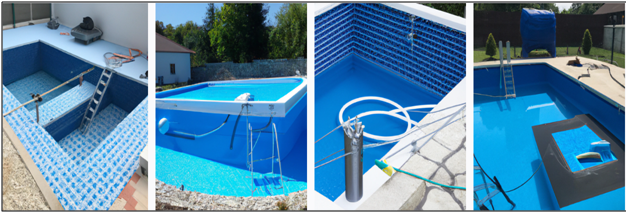A Comprehensive Guide to Fiberglass Pool Installation!

Fiberglass pool installation is becoming increasingly popular due to its durability, easy maintenance, and relatively quick installation time. In this article, we will guide you through the process of installing a fiberglass pool, step by step.
Steps to be followed:
Site Preparation:
Before choosing fiberglass pool installation, you need to prepare the site properly. Start by marking out the area where the pool will be installed, and make sure it is level. If the site is not level, you may need to excavate or fill in areas to make it so.
Excavation:
Once the site is prepared, it’s time to excavate the area where the pool will be installed. The depth of the excavation will depend on the size and shape of the pool. It’s important to excavate the area accurately to ensure the pool fits perfectly.
Plumbing and Electrical:
Once the excavation is complete, the next step is to install the plumbing and electrical systems. The plumbing system should include pipes for water circulation, a skimmer, and a pump. The electrical system should include wiring for pool lights and any other accessories.
Base Installation:
The next step is to install the base for the pool. The base is usually made of gravel or sand, and it’s important to ensure it is level and compacted to prevent any settling after installation.
Fiberglass Pool Delivery:
After the base installation is complete, the fiberglass pool can be delivered to the site. It’s important to ensure that there is enough space for the delivery truck to access the site and unload the pool.
Pool Installation:
The actual pool installation process is relatively quick and straightforward. The pool is lowered into the excavation using a crane or other lifting equipment, and the plumbing and electrical systems are connected. Once the pool is in place, the area around the pool is backfilled, and the pool is filled with water.
Finishing Touches:
Once the pool is installed and filled with water, it’s time to add the finishing touches. This includes installing any decking or landscaping around the pool, as well as any additional accessories such as pool lights or a heater.
Maintenance:
After the pool installation is complete, it’s important to follow a regular maintenance routine to keep the pool in top condition. This includes regular cleaning, water testing and balancing, and checking the pool equipment.
Benefits of Fiberglass Pools:
Fiberglass pools offer a number of benefits over other types of pools, including:
Durability: Fiberglass pools are durable and can last for many years with proper maintenance.
Easy Maintenance: Fiberglass pools are easy to maintain, requiring less cleaning and fewer chemicals than other types of pools.
Quick Installation: Fiberglass pools can be installed relatively quickly compared to other types of pools, reducing the amount of time the site is disrupted.
Versatility: Fiberglass pools come in a variety of shapes and sizes, making it easy to find one that fits your needs and the available space.
Conclusion:
Fiberglass pool installation is a straightforward process that can be completed relatively quickly compared to other types of pools. Proper site preparation, excavation, and base installation are important steps to ensure the pool fits perfectly and is level. The actual pool installation process is quick and straightforward, and finishing touches such as decking and landscaping can be added once the pool is installed. Regular maintenance is important to keep the pool in top condition, and fiberglass pools offer a number of benefits over other types of pools, including durability, easy maintenance, quick installation, and versatility.




